Issue 135
Term 4, 2025
Creating a collection with SCIS
Written as part of her Master of Education (Teacher Librarianship), Claire McLennan’s article examines how contemporary realistic fiction can help teacher librarians curate inclusive collections that reflect the diversity of their school communities. By focusing on titles with neurodivergent characters, she shows how literature can support student identity and wellbeing while linking to curriculum outcomes. McLennan also highlights how SCIS’s advanced search tools and subject headings make it easier for teacher librarians to create purposeful, up-to-date reading lists.
The collection starts here
The value of a teacher librarian in a primary school
The teacher librarian is responsible for planning and managing the use of the library to ensure it is safe, inclusive, engaging and encourages independent reading and learning (NSW Department of Education, 2025). Teacher librarians must read, review and select new titles that meet the changing needs of every student. The Australian Institute for Teaching and School Leadership AITSL Standards for teacher librarian practice ‘outlines the professional knowledge, practice and commitment expected of teacher librarians at a working level of excellence’ (2014, p.1).
When teacher librarians are asked to curate a collection, they consult with various LibGuides and book selection tools, such as the Schools Catalogue Information Service (SCIS), to find full bibliographic records, reviews, journal articles and webinars that ensure the library remains an ever-evolving resource (SCIS, 2025). When this is combined with the teacher librarian’s comprehensive understanding of their school context and class profiles, it ensures the teacher librarian is an essential school resource when planning for learning across the curriculum.
The interactions between teacher librarians and students and teachers across the school offer them a unique perspective on how students at different developmental phases engage with various texts. They can observe what students gravitate towards in the library and identify new reading trends, making them a valuable human resource linking teachers to new literature for educational purposes which often influences students to seek new genres.
Teacher librarians need to consider the profile of their school to ensure the library provides access to literature that includes a diverse range of characters.
Inclusive collections
Curating with purpose
In 2024, 25.7% of students enrolled in Australian schools received educational adjustments due to a diagnosed disability. Some 53.9% of these were students with a cognitive disability (Australian Curriculum, Assessment and Reporting Authority, 2024).
To meet these needs, it is essential that school libraries provide access to books that mirror the diversity of their school community and build empathy.
Teacher librarians need to consider the profile of their school to ensure the library provides access to literature that includes a diverse range of characters. To support this, we have evaluated a variety of literature that includes neurodivergent characters and themes recommended for students aged between 8 and 12, titles that you might like to consider including in your school library.
Connecting to texts
The power of contemporary realistic fiction
Contemporary realistic fiction focuses on real-life issues such as survival, identity, family dynamics, friendships, disabilities and growing up. It explores themes such as self-discovery, family relationships, friendships and multiculturalism (Vardell, 2019, pp. 154–155). The evolving social themes in this genre can lead to controversy due to the perspectives they reveal and the challenges of the associated ideologies. Vardell (2019, p. 157) identifies a need for more realistic stories with contemporary characters living with a disability. This identification can have a profound impact on our students. As Temple et al. (2019) note, ‘When child readers recognise something in a story that is similar to their own feelings or thoughts, they realise they are not alone.
Dr Leanne Longfellow (2020) highlights how focusing on representations of people with a disability serves as a critical window for examining and challenging ableism and discrimination. Her article outlines standards to consider when selecting texts, although she suggests that adhering completely to every standard limits opportunity for discussion surrounding societal attitudes towards people with a disability. Some of the key standards she lists include the following.
- Stereotypes: does the portrayal of the character with a disability differ significantly from other characters?
- Message in the text: describing the characters with a disability as inspirational by overcoming their disability is problematic.
- Approach: is the character’s disability an obstacle to overcome?
- Positive language: does the story include slurs or negative language such as ‘suffering from’ or ‘wheelchair bound’.
- Experience: what is the author’s and illustrator’s experience of disability?
The following annotated bibliography was developed with the support of SCIS. Using the advanced search tool, SCIS and ScOT, and direct links to book reviews made selecting the texts easy.
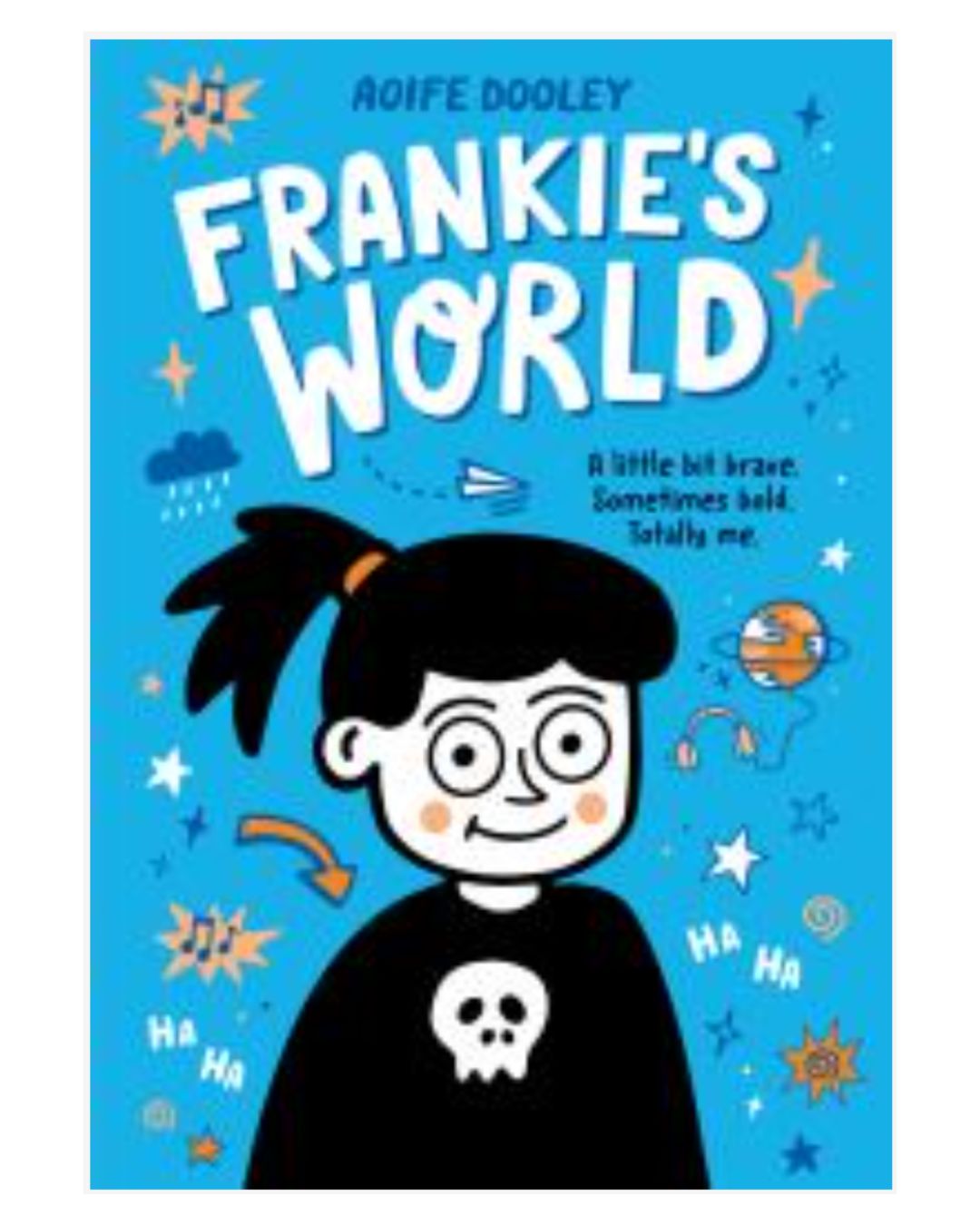
Cover of Frankie's World
Frankie’s world by Aoife Dooley
Aoife Dooley’s graphic novel Frankie’s world (2022) explores the world of 12-year-old Frankie who knows she is different to her peers. She feels excluded by everyone except her best friend Sam.
Dooley created Frankie as a mirror of her own experiences growing up with autism. She uses a candid approach to describe Frankie’s family life and adventures with her best friend Sam. Sam is illustrated in a wheelchair. However, Dooley doesn’t place both characters’ disabilities at the forefront of the narrative. She describes Frankie’s personality traits, such as saying what’s on her mind, her reaction to loud noises and strong smells without connecting them to a diagnosis.
By doing this, she offers readers the opportunity to recognise themselves in the story, without them seeing it as a disability. This is evident in the book review provided by Ryan, aged 10.
‘I like that Frankie doesn’t quite fit in, I have definitely felt like that and her descriptions of saying things without thinking about them definitely sounds like me.’ (Tyson, 2021).
Teaching with graphic novels moves beyond reading for pictures, it leads the way for deep discussion and critical analysis of the nuances of the format (Laycock, 2019, p. 26). As multimodal texts, graphic novels help students to visualise and understand complicated ideas. Graphic novels reduce text overload, decreasing anxieties students have with heavy print-based reading (Falter, cited in Gonzalez, 2016). This offers students the opportunity to focus on the themes in the story. The organisation of Frankie’s world shows consideration of readers of all abilities not only in its themes, but also its formatting.
Dooley limits the frames per page so as not to overwhelm the reader. Ryan highlights that Dooley’s limited colours of blue, black and orange in her illustrations helped him to see colour variation where his colour blindness had left other comics dull.
The characters’ experiences in Frankie’s world provide opportunity for teachers to explore important elements of the HPE learning area of the Australian Curriculum. It is an inclusive novel that allows students to recognise themselves within the story or better understand peers who share similar characteristics. As suggested by Johnson et. al. (2017, p. 175), seeing the world from a character’s perspective ultimately opens a doorway for students to see the world differently.
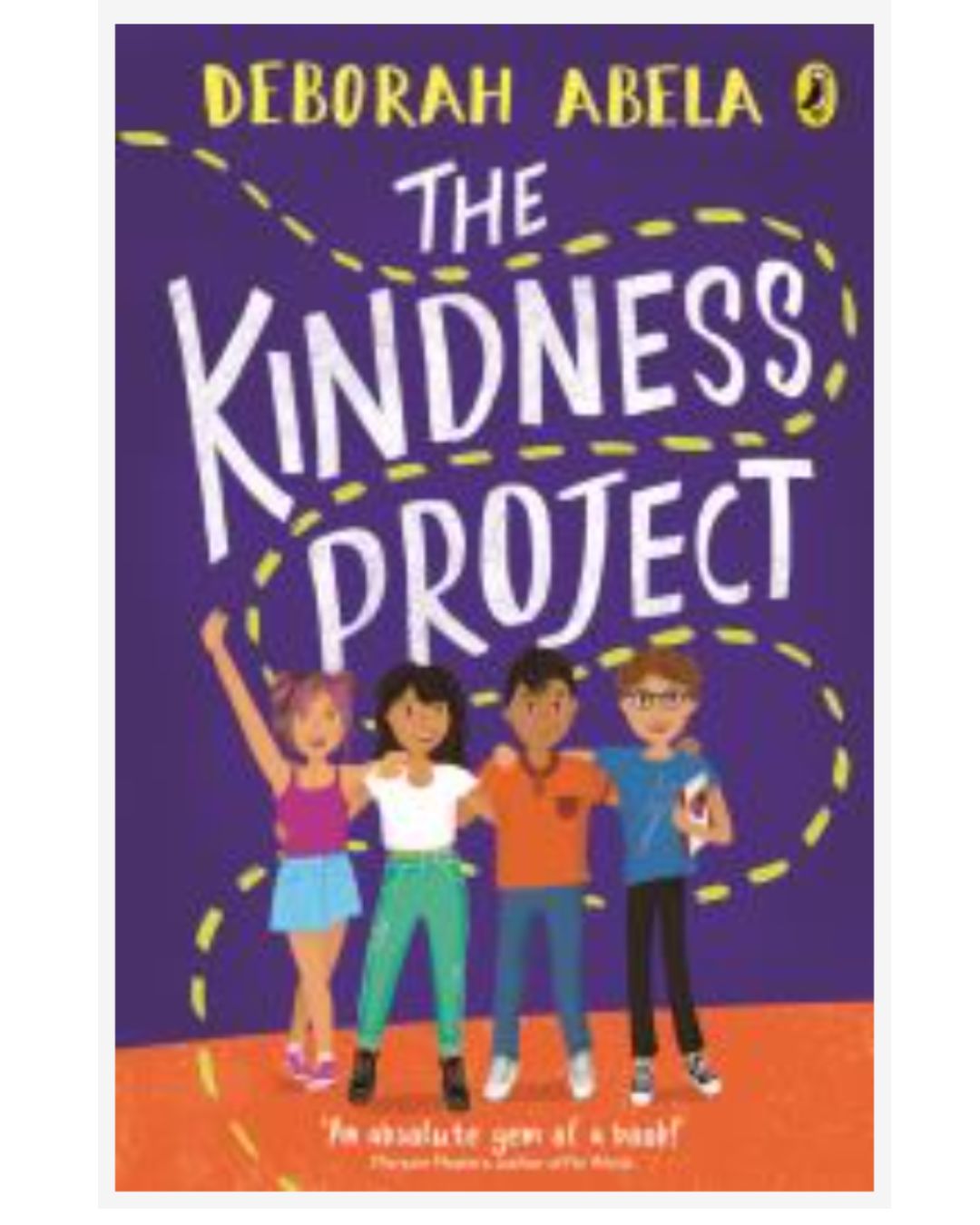
Cover of The kindness project
The kindness project by Deborah Abela
This verse novel is about friendships that emerge as four students come together to share their experiences of life, family relationships and mental health.
Peter Hollindale describes the genre of the verse novel as ‘a fairly recent but fast-growing addition to the repertoire of children’s literature’ (as cited in Alexander, 2005, p. 269). As a contemporary genre, its characteristics continue to evolve. It is a genre where both poets and novelists use verse techniques to colour their story.
Alexander (2005, pp. 270–271) highlights the suitability of verse novels as a genre for portraying the angst of adolescence, allowing the reader to experience the emotions of the characters in the moment.
One key feature of verse novels is the ‘narrative voice’ that is evident in The kindness project. Abela also uses font type, size and position to further emphasise how the protagonist, Nicolette, is feeling at various points in the story. Readers are provided a window into how Nicolette observes and interacts with the world around her.
Abela avoids stereotypes while the characters feel isolated; they are not described as significantly different and the disabilities addressed are not left as a taboo, but are explored through the characters’ curiosity. Nicolette tries to learn more about Alzheimer’s to better understand her nanna’s behaviour. Her friend Leaf openly discusses his mum’s treatment for schizophrenia, eliminating any preconceived assumptions made about the disabilities addressed in the novel. The kindness project examines characters’ strengths as they are discovered through the sharing of the many personal challenges they face.
The kindness project provides opportunities for students to identify with the characters’ personal strengths and observe and understand how their sense of identity changes over the novel.
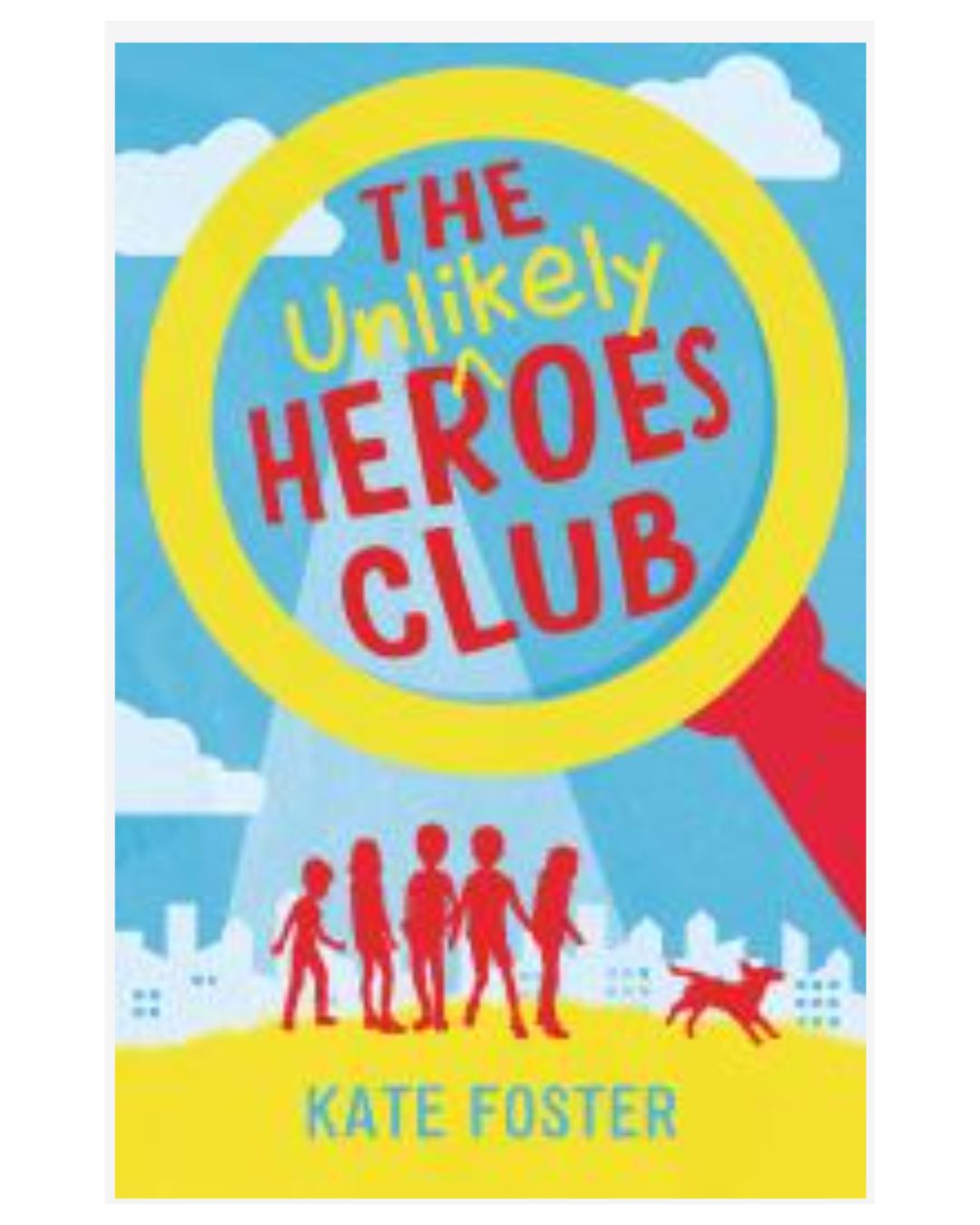
Cover of The unlikely heroes club
The unlikely heroes club by Kate Foster
Kate Foster’s novel offers readers a window into the world of Oli, who narrates his story. Oli reluctantly attends ‘Heroes Club’, which is designed to foster social connections and emotional awareness for children on the autism spectrum. Foster moves beyond stigmas and stereotypes surrounding autism by creating four friends for Oli, each sharing his diagnosis, yet possessing their own unique characteristics and personalities. Through their diverse strengths, the children demonstrate that they can face challenges just like other children.
Artman-Meeker, Grant and Yang (2016, p. 151) highlight the importance of providing agency for characters with disability, which Foster achieves by empowering her characters.
Marge, Oli’s social coach, candidly embraces her autism diagnosis, exemplifying that adult autistic people have jobs like every other adult. Oli and his friends are empowered in their shared decision to save a stray dog from a derelict building. The unlikely heroes club promotes inclusivity by presenting its characters as individuals finding their own place in the world, as is the case for everyone, rather than limiting them to stereotypes connected with their diagnoses.
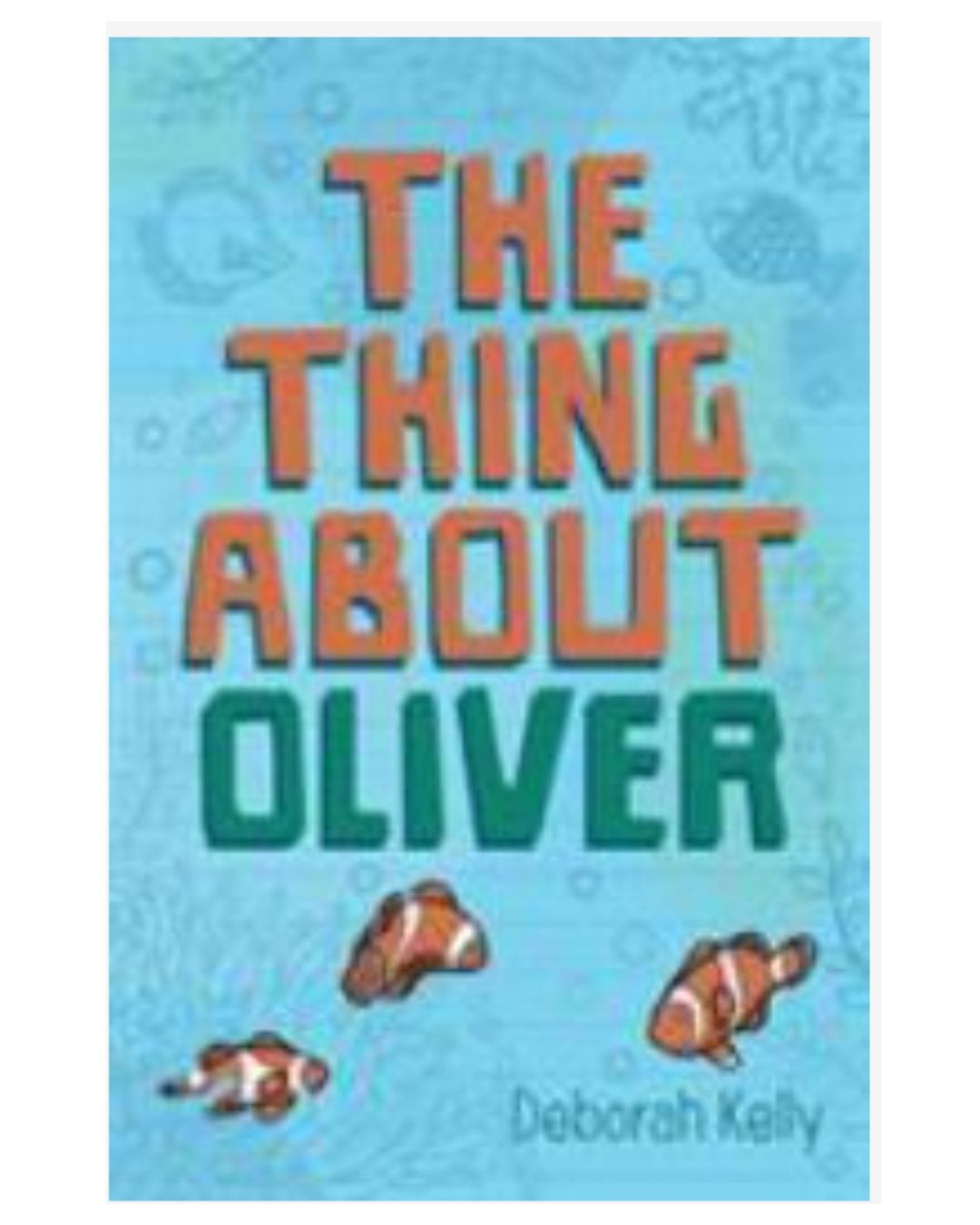
Cover of The thing about Oliver
The thing about Oliver by Deborah Kelly
Deborah Kelly’s The thing about Oliver is told from the perspective of 12-year-old Tilly who shares the complexities of living with her autistic brother who requires most of her mum’s attention. Kelly confronts the reader by providing unfiltered descriptions of Oliver’s reactions when he is upset. Kelly’s novel provides a good example of the controversy that exists in contemporary realistic fiction. Teacher librarians must reflect on their personal inclinations to exclude a text to avoid challenging conversations.
Excluding this type of text limits opportunities to discuss complex social issues found in contemporary realistic novels (Vardell, 2019, p. 162).
Excluding The thing about Oliver risks silencing a demographic that is rarely given a voice. In a recent interview Kelly highlighted that she wanted to address the complexities experienced by siblings of children with severe autism (Lawn, 2020).
Collection development should be inclusive of varied viewpoints and the teacher librarian needs to use their ‘knowledge, insight, judgment, courage and imagination’ when selecting texts (Rickman, 2010, p. 3). This book demonstrates why it is essential that the teacher librarian works with the classroom teacher to review class profiles to evaluate the impact the inclusion of a title such as this may have on the class profile. Introducing the text for the classroom would require careful scaffolding and the creation of safe spaces for discussions with prepared responses. Kelly wrote the book to give children like Tilly a voice to help them understand they are not alone (Lawn, 2020).
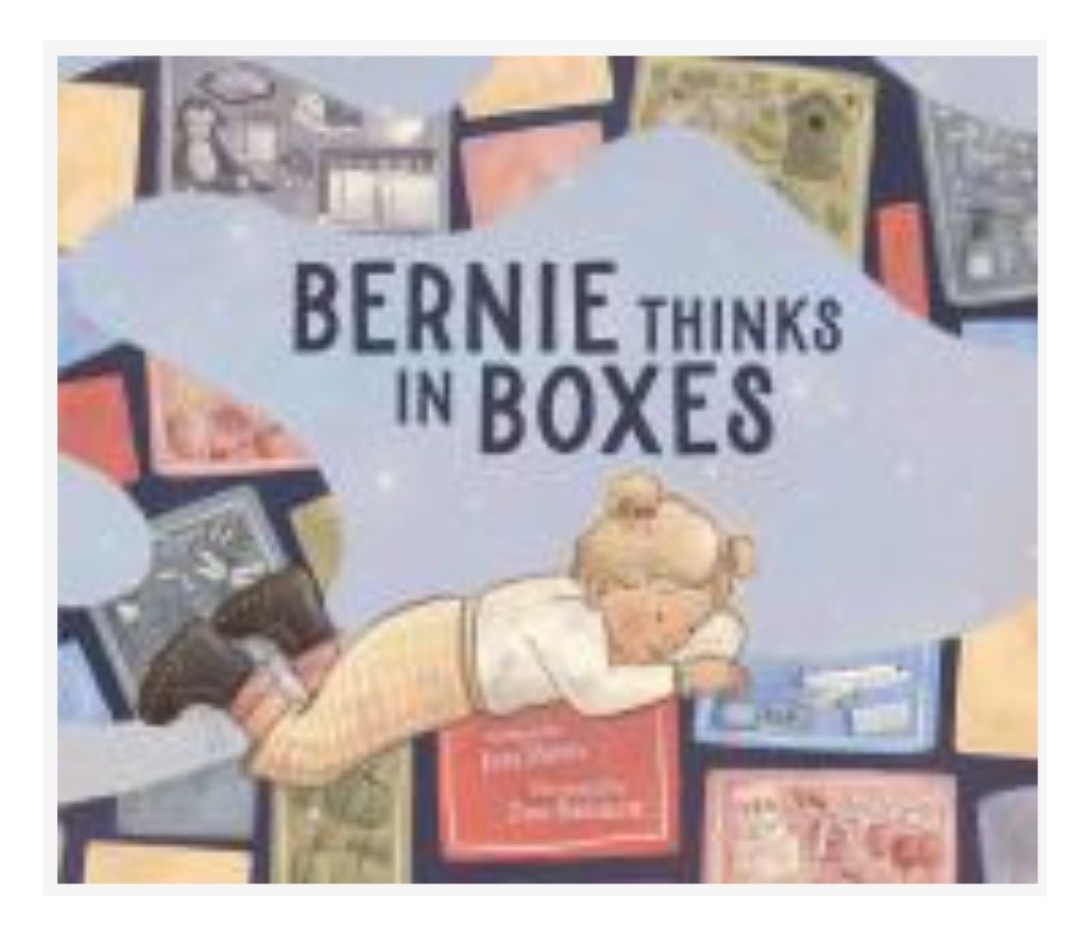
Cover of Bernie thinks in boxes
Bernie thinks in boxes written by Jess Horn, illustrated by Zoe Bennett
SCIS provides teacher librarians with opportunities to broaden resource lists to include various formats of books connected to a specific subject. Using the SCIS subject terms provides a doorway to similarly themed books. When selecting picture books for teaching purposes, teacher librarians must analyse both narrative and illustrations.
Coats (2008, p. 76) highlights that postmodern picturebooks provide children with cultural and visual literacies and narrative patterns that allow them to craft identities recognisable in society. This highlights why it is essential to provide students access to contemporary picture books that reflect who they are or provide a window in to how their peers may think and feel.
Jess Horn is an advocate for autism and acceptance. She is open about her late autistic diagnosis and discusses the challenges she faced growing up (Horn, 2024). Bernie was inspired by Jess's categorical way of thinking. Her book symbolises how someone with autism processes the world around them (Attain Healthtech, 2025). Zoe Bennett’s illustrations of Bernie in literal and metaphorical boxes provide opportunities for teachers to explore the author’s play on language and discuss why using boxes to categorise people and places may be helpful.
Horn provides Bernie with a sense of agency by modelling how Bernie deals with her conflicting emotions when her figurative boxes become muddled. Bennett’s illustrations of how Bernie reacts provide opportunities for children to see their own behaviours or those of their peers. This provides the reader with empathy and understanding. Ultimately, Bernie finds her own solution to the problem by finding a way to merge some of her boxes.
Horn provides a window into how changes can upset students with autism. Bennett illustrates strategies that teachers, parents and students can apply when managing changes in routine. Bernie’s boxes lend themselves to an art activity that allows children to explore their identity. Bernie’s illustrations of her boxes of people and places highlight the importance of visualising changes in routines in order to cope better with them.
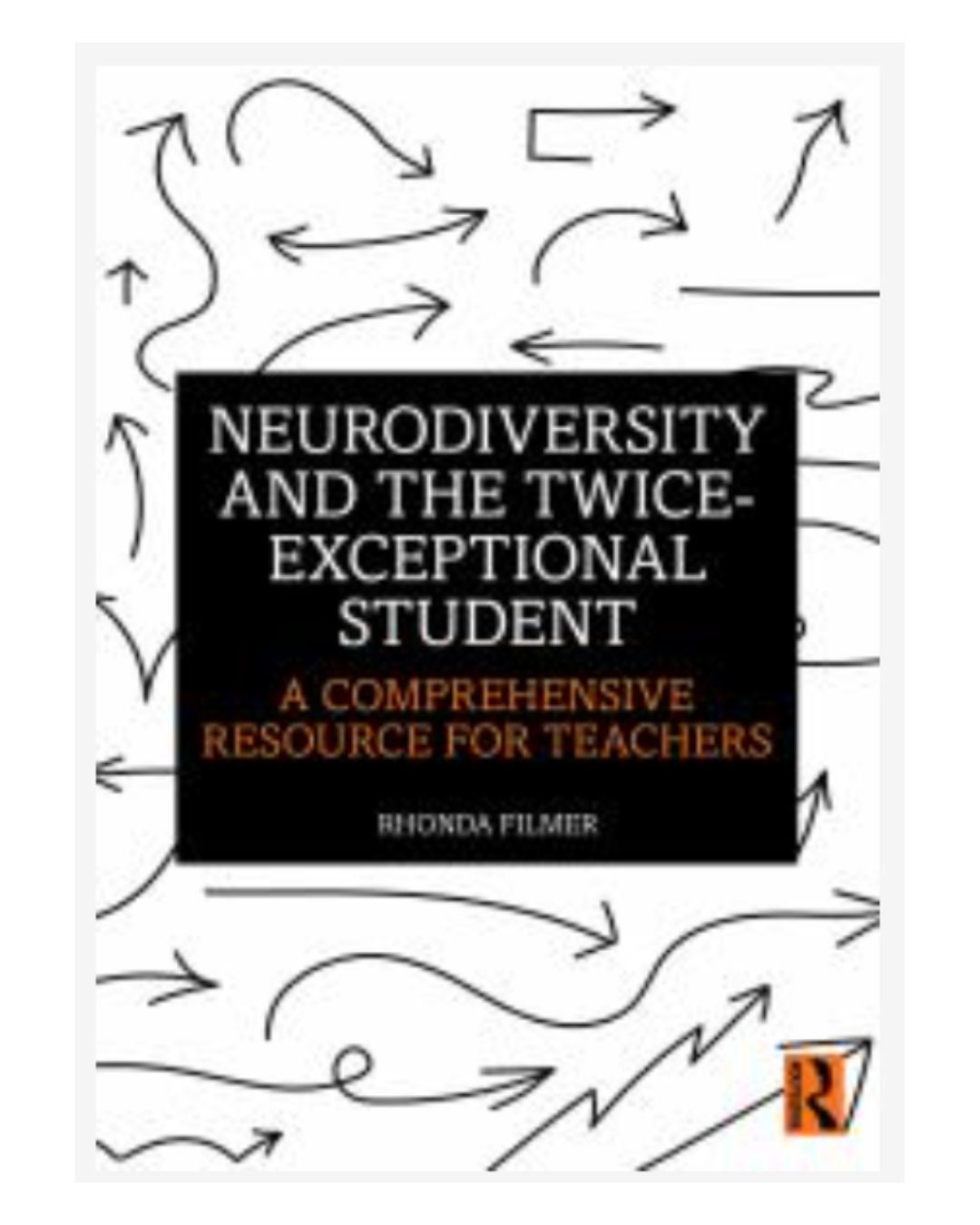
Cover of Neurodiversity and the twice-exceptional student: a comprehensive resource for teachers
Neurodiversity and the twice-exceptional student: a comprehensive resource for teachers by Ronda Filmer with Geraldine Townend and Trevor Clark
It is crucial for teacher librarians to provide access to suitable resources that align with the school context. By curating resources that reflect the curriculum, student interests and community values, teacher librarians foster an inclusive learning environment that promotes academic success and critical thinking.
SCIS offers features that streamline the resource selection process. Its comprehensive database allows teacher librarians to easily find and select materials that meet the specific needs of their school.
Additionally, SCIS offers cataloguing and classification services that save library staff time and ensure consistency, making it easier to manage and share resources effectively.
Filmer’s book offers an overview of assessing the impact of co-existing conditions both on student wellbeing and learning strategies. It models specific examples of various student behaviour and offers discussion points and research of how to approach, support and extend students.
Combining the SCIS subject search and filtering by publication year can provide teachers with the most up-to-date reference material.
Using SCIS subject searches, advanced searches and additional resources provided on the SCIS platform, teacher librarians can effectively ensure their school has the reading materials that suits its context.
Conclusion
The purpose of creating this neurodivergent reading list is for students to discover how family, community, peers, culture and place contribute to their identity. As highly accomplished leaders, teacher librarians know there is more to curating a collection than grouping similar texts. They must ensure their choices are aligned to a framework recommended by specialists in the field. Artman- Meeker, Grant and Yang (2016) highlight key considerations to include such as the portrayal of disablities, family roles, cultural diversity, voice and self-determination. Longfellow (2020) emphasises the importance of evaluating novel choices and use in the specific school context. The teacher librarian must consider all of these factors during the curation process to ensure the right book is available to the right class at the right developmental reading phase.
Thematically organising books maximises the impact literature can have on readers. It paves the way for teachers to address universal issues (Johnson, Koss, & Martinez, 2017, p. 573). Contemporary realistic fiction novels present new perspectives on how other students think and feel which, when scaffolded into class discusions, allow students to see the world with a new perspective.
Teacher librarians need access to the tools that can support them in the creation of up-to-date reading that provides students with the opportunity to meet familiar characters in realistic contemporary fiction. When students can see themselves represented, they gain a sense of belonging. Teacher librarians must remain mindful that teachers also need access to current professional development resources that suit their school context. Using SCIS subject searches, advanced searches and additional resources provided on the SCIS platform, teacher librarians can effectively ensure their school has the reading materials that suit its context.
For futher support in effectively using SCIS in your school library select the link here: https://players.brightcove.net/6153144529001/experience_654336ee09d2cb458fb591aa/share.html
Bibliography
Abela, D. (2024). The kindness project. Australia: Puffin.
Dooley, A. (2022). Frankie’s world. London: Scholastic Ireland.
Filmer, R., Townend, G., & Clark, T. (2024). Neurodiversity and the twice-exceptional student: a comprehensive resource for teachers. Abingdon: Routledge.
Foster, K. (2023). The unlikely heroes club. Newtown: Walker Books.
Horn, J., & Bennett, Z. (2024). Bernie thinks in boxes. Melbourne: Affirm Press.
Kelly, D. (2020). The thing about Oliver. Chinchilla (Qld): Wombat Books.
References
Alexander, J. (2005, September). The verse-novel: a new genre. Children's Literature in Education, 36(3), 269–282. Retrieved from https://link.springer.com/article/10.1007/s10583-005-5974-z
Artman-Meeker, K., Grant, T. O., & Yang, X. (2016, January). By the book – using literature to discuss disability. Teaching Exceptional Children, 48(3), 151–158.
Attain Healthtech. (2025, March 28). Exploring neurodivergence in children’s books with author Jess Horn. Retrieved from Mable Newsroom – Community: https://mable.com.au/newsroom/exploring-neurodivergence-in-childrens-literature-with-author-jess-horn/
Australian Curriculum, Assessment and Reporting Authority. (2024). School students with disability. Retrieved from National Report on Schooling in Australia: https://www.acara.edu.au/reporting/national-report-on-schooling-in-australia/school-students-with-disability
Coats, K. (2008). In L. Sipe & S. Pantaleo, Postmodern picturebooks: Play, parody and self-referentiality (pp. 75–87). Taylor & Francis Group.
Gonzalez, J. (2016, October 9). Graphic novels in the classroom: a teacher roundtable. Retrieved from Cult of Pedagogy: https://www.cultofpedagogy.com/teaching-graphic-novels/
Horn, J. (2024, April). Self-acceptance as a late diagnosed autistic. Retrieved from ASPECT Autism Spectrum Australia: https://www.aspect.org.au/blog/self-acceptance-as-a-late-diagnosed-autistic-by-jess-horn
Johnson, N. J., Koss, M. D., & Martinez, M. (2017, November 7). Through the sliding glass door: #empower the reader. The Reading Teacher, 71(5). Retrieved from https://primo.csu.edu.au/permalink/61CSU_INST/15aovd3/cdi_proquest_journals_2007485571
Lawn, J. (2020, August). Inside the CBCA Shortlist. Retrieved from Paperbark Words Blog: https://paperbarkwords.blog/2020/08/11/the-thing-about-oliver-by-deborah-kelly/#:~:text=The%20Thing%20About%20Oliver%20is,%2C%20Oliver%2C%20who%20has%20autism.
Laycock, D. (2019, January). Pilgrims in a foreign land: teachers using graphic novels as classroom texts. Scan: The Journal for Educators, 38(2), 2–13. Retrieved from https://search-informit-org.ezproxy.csu.edu.au/doi/10.3316/informit.904766889735342
Longfellow, L. (2020, December 20). Exploring children's literature to promote inclusion. Retrieved from Collaborative Learning and Networking through Workshops, Webinars, Professional Reading Groups and Online Learning: https://inclusiveeducationplanning.com.au/uncategorized/exploring-childrens-literature-to-promote-inclusion/
Nasatir, D., & Horn, E. (2003). Addressing disability as a part of diversity. Young Exceptional Children. Retrieved from https://doi-org.ezproxy.csu.edu.au/10.1177/109625060300600401
NSW Department of Education. (2020). Inclusive Education Statement for students with disability. Retrieved from NSW Department of Education: https://education.nsw.gov.au/content/dam/main-education/teaching-and-learning/disability-learning-and-support/our-disability-strategy/inclusive-education/Inclusive-Education-Statement.pdf
NSW Department of Education. (2025, March 7). Library procedures. Retrieved from NSW Government website – Education: https://education.nsw.gov.au/policy-library/policies/pd-2005-0221-01
NSW Department of Education. (n.d.). PDHPE–S2 unit. Retrieved from How I keep myself and others safe.
NSW Education Standards Authority. (2025). K–6 Personal Development, Health and Physical Education K–6 syllabus. Retrieved from NSW Curriculum website: https://curriculum.nsw.edu.au/learning-areas/pdhpe/pdhpe-k-6-2024/content/stage-2/fa2bbc4896?show=advice
Rickman, W. (2010, October). A study of self-censorship by school librarians. School Library Research, 13. Retrieved from https://www.ala.org/sites/default/files/aasl/content/aaslpubsandjournals/slr/vol13/SLR_StudyofSelf-Censorship_V13.pdf
Schools Catalogue Information Service. (2025). About – Find out more about the Schools Catalogue Information Service. Retrieved from https://www.scisdata.com/about
Tyson, S. (2021, December 30). Kid's book review: Frankie’s World. Retrieved from Books Up North: https://booksupnorth.com/kids-book-review-frankies-world/
Vardell, S. (2019). Types of contemporary realistic fiction. In Children's Literature in Action: A Librarian's Guide (pp. 154–164). EBSCO Publishing.
Wheelers for Schools. (2025). Product details. Retrieved from Wheelers Schools: https://www.wheelersbooks.com.au/product/Frankies-World-Aoife-Dooley/9780702307355?keyword=frankie%27s+world&sort=relevance
